Weeding and watering are my two least favorite gardening activities, especially in summer. Thorough mulching takes care of the first, but reducing the second also requires choosing the right plants. I prefer those that sip, not gulp. In fact, any plant that can’t go a week without me standing at the end of a hose will suffer a short and miserable life.
Please understand, I am talking about plants that are growing in the ground, not containers. With the exception of succulents, most plants growing in pots require watering about every other day because they have such little soil in which to grow, and the soil dries quickly. With that said, I hereby present to you ten flowers that, once established, will bloom all summer with just a modicum of H2O. Just give them plenty of sun and well-drained soil.
Blanket Flower
- Botanical Name: Gaillardia x Grandiflora
- Sun Exposure: Full
- Soil Type: Well-drained
- Soil pH: Slightly acidic
If you live near the beach, you’ll often see blanket flowers growing right on the dunes in pure sand. Hybridizers have done a lot of work with them to produce bigger flowers, different colors, and bushier forms. The Southern Living Plant Collection includes Sunset «Celebration» Gaillardia (PP26969), which is red and yellow and resists fading. The daisy-like «Mesa Yellow» features sunny petals and a golden center. Both grow 14 to 16 inches tall and wide. Butterflies love them. Clip old seed heads to keep new flowers coming.
Summer Snapdragon
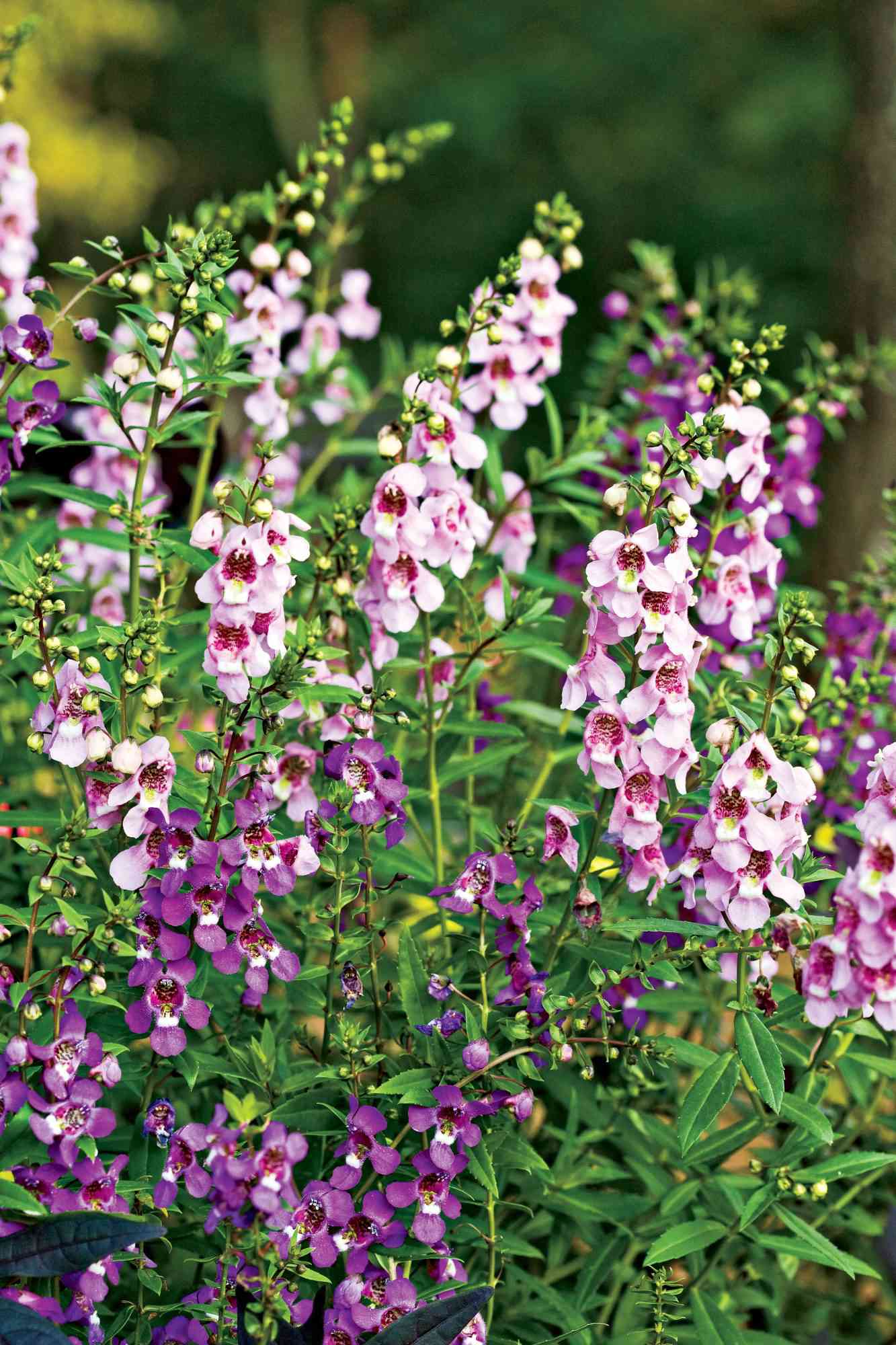
- Botanical Name: Angelonia angustifolia
- Sun Exposure: Full sun
- Soil Type: Moist, well-drained
- Soil pH: Acidic
Old-fashioned snapdragons (Antirrhinum majus) hate summer heat. Summer snapdragons (above) love it. These tropical natives come in two forms: upright and trailing. Spikes of blue, purple, lavender, red, pink, or white blossoms adorn the foliage. Plants only need occasional deadheading. Butterflies like them, but deer don’t. If flower production wanes a bit, give them a drink of liquid fertilizer.
Globe Amaranth
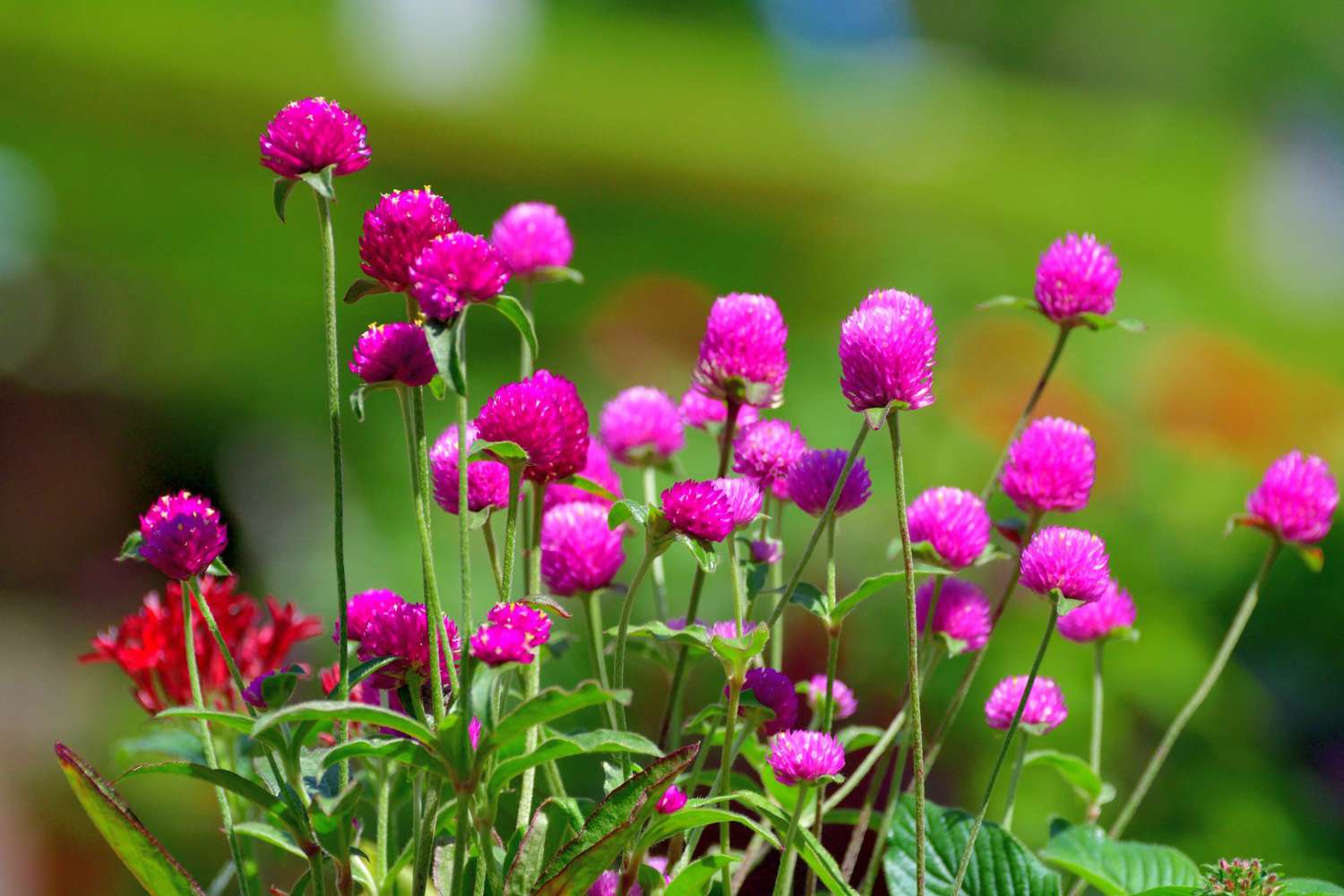
- Botanical Name: Gomphrena globosa
- Sun Exposure: Full
- Soil Type: Well-drained
- Soil pH: Acidic, neutral
Easy to start from seed and just as easy to grow in a garden, globe amaranth (above) is a lazy gardener’s dream. Clover-like blooms in colors of pink, purple, white, orange, and red appear nonstop. They make great cut flowers, as they hold their colors when they dry. Some plants like those in the «Strawberry Fields» series can grow 2 feet tall. My favorite, though, is «Buddy,» a purple dwarf that reaches only 6 to 8 inches. Plants don’t need deadheading, and deer don’t eat them.
Ornamental Purslane

- Botanical Name: Portulaca hybrid
- Sun Exposure: Full
- Soil Type: Well-drained
- Soil pH: Slightly acidic
It’s hard to believe that a terrible lawn weed could give birth to an amazing flower, but it happened. Plant breeders crossed common purslane (Portulaca oleracea) with other species to produce an ornamental marvel (above) that pairs succulent, paddle-shaped leaves with showy flowers that may be red, orange, peach, yellow, or white. Flowers open in the morning and close in the evening. Because of its trailing nature, ornamental purslane makes knock-out hanging baskets, but you can also use it to edge flower borders. Butterflies like it, but deer don’t. Minimal attention is required—just don’t water too much.
Lantana

- Botanical Name: Lantana sp.
- Sun Exposure: Full
- Soil Type: Well-drained
- Soil pH: Neutral
Why do you see sweeps of lantana planted so often at shopping malls and neighborhood entrances? Because they supply continuous color with just about zero care. Rounded flower clusters about an inch in diameter usually consist of light-yellow blooms in the center with orange, red, pink, peach, yellow, or white blooms surrounding them, although some selections offer solid colors. Butterflies loooove lantana. It needs no deadheading. Check the label for height and spread, as some grow large and mounding, while others hug the ground.
Butterfly Bush

- Botanical Name: Buddleja davidii or Buddleia davidii
- Sun Exposure: Full
- Soil Type: Well-drained
- Soil pH: Acidic, neutral
Add a lush butterfly bush to your garden for color from spring through summer. The fast-growing shrub features pink, purple, yellow, or white flowers that attract pollinators. This plant can go for a couple of weeks without water during extremely dry weather once established.
Lavender
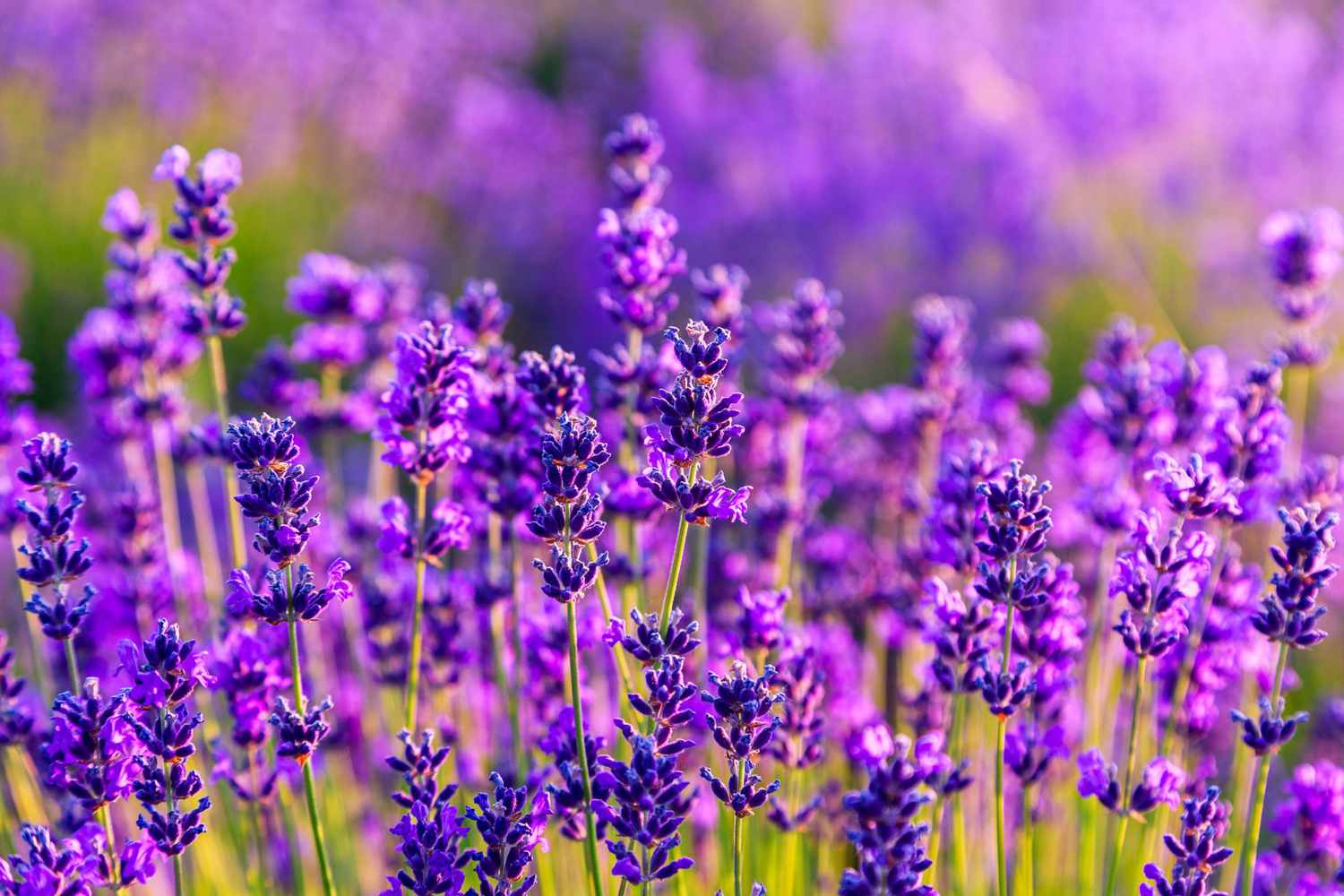
- Botanical Name: Lavandula
- Sun Exposure: Full
- Soil Type: Sandy, well-drained
- Soil pH: Alkaline
Give this sun-loving plant a bright spot in your garden. Native to the Mediterranean, lavender is not afraid of the summer heat. Flowers planted in garden beds only need to be watered during prolonged periods of drought. Watering every couple of weeks will satisfy this fragrant perennial.
Purple Coneflower
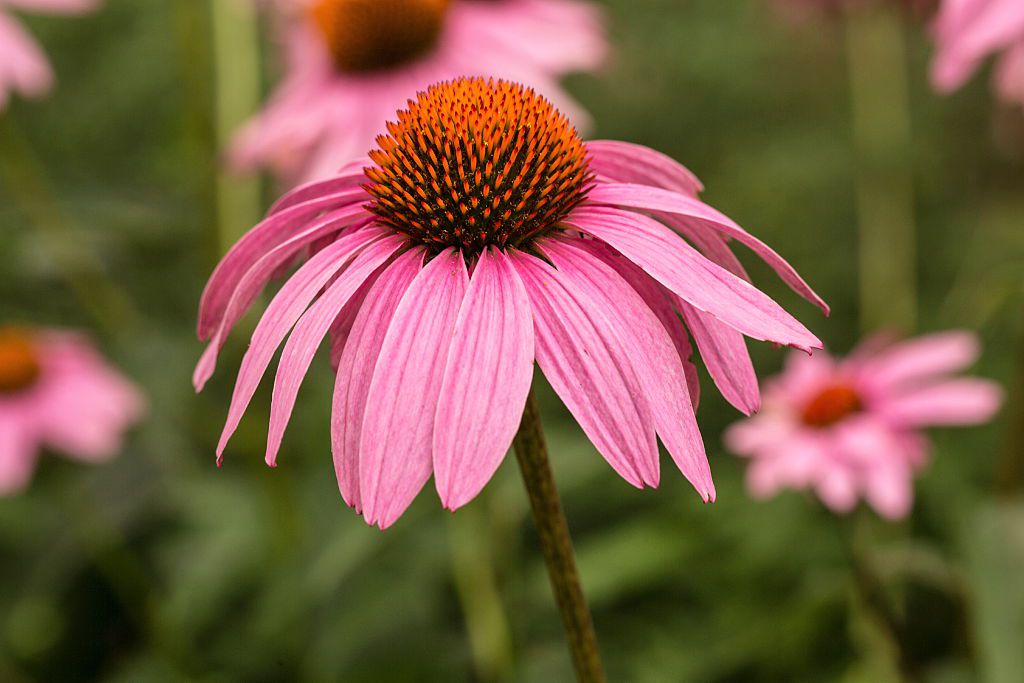
- Botanical Name: Echinacea purpurea
- Sun Exposure: Full
- Soil Type: Moist, well-drained
- Soil pH: Neutral
A patch of these tall flowers can add color to your garden all summer long. They’re easy to grow in almost any soil, as long as it’s not wet. The drought-resistant blooms attract pollinators to your yard. Deadhead purple coneflowers to encourage new growth. Even if you don’t deadhead, the dying cones will provide seeds for finches who come to your garden.
Dianthus
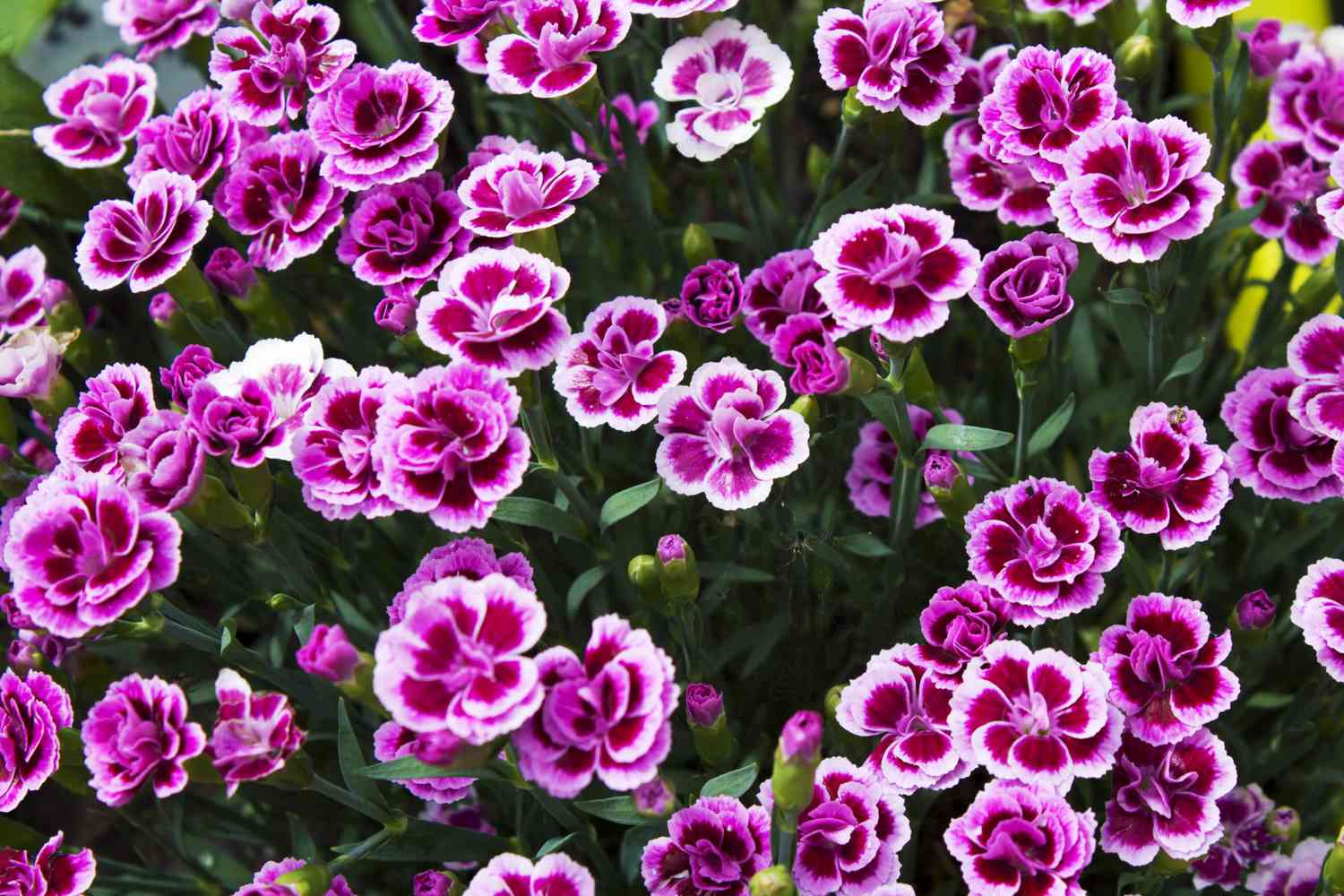
- Botanical Name: Dianthus caryophyllus
- Sun Exposure: Full
- Soil Type: Well-drained
- Soil pH: Neutral, slightly alkaline
These mounding plants are easy to care for. Plant them early in the season so they’ll have time to become well-established before the hottest summer temperatures arrive. They’re drought-tolerant but don’t like extreme mid-summer heat. Aim to water them weekly, but avoid overwatering and creating soggy soil. Deadheading these brightly colored perennials will help them bloom again.
Catmint

- Botanical Name: Nepeta spp.
- Sun Exposure: Full
- Soil Type: Well-drained
- Soil pH: Acidic, neutral, alkaline
Bring color to garden borders. Catmint blooms all summer and doesn’t mind Southern summers. Once established, it is drought tolerant. Small purple flowers attract bees and butterflies, but deer typically stay away from them. Like its relatives in the mint family, catmint does spread but it can be confined to a specific area.
More Plants That Can Handle Southern Summers
There are more ways to incorporate plants into your garden that are drought tolerant or can stand up to sweltering, summer heat. For starters, these 20 plants will retain their beauty, whether in beds or containers, despite the sun beating down and a scarcity of rain. To go local, choose native plants—from oakleaf hydrangea to yellow jessamine—well-suited to the heat and drought of Southern summers. Container gardens will hold their own in the hottest months with heat-tolerant plants. For edible gardens, drought-tolerant herbs are beautiful to look at and will boost your summer recipes with lots of flavor. Finally, dry-climate succulents are always a low-maintenance option.
Was this page helpful?
Thanks for your feedback!
Tell us why!